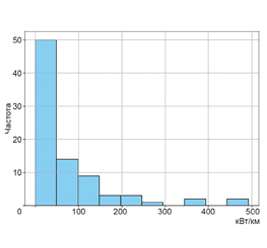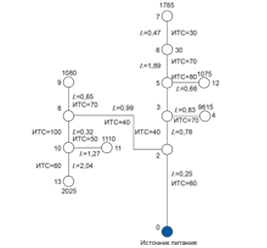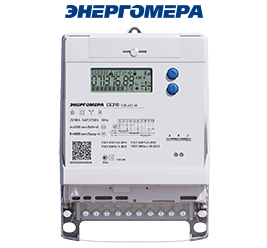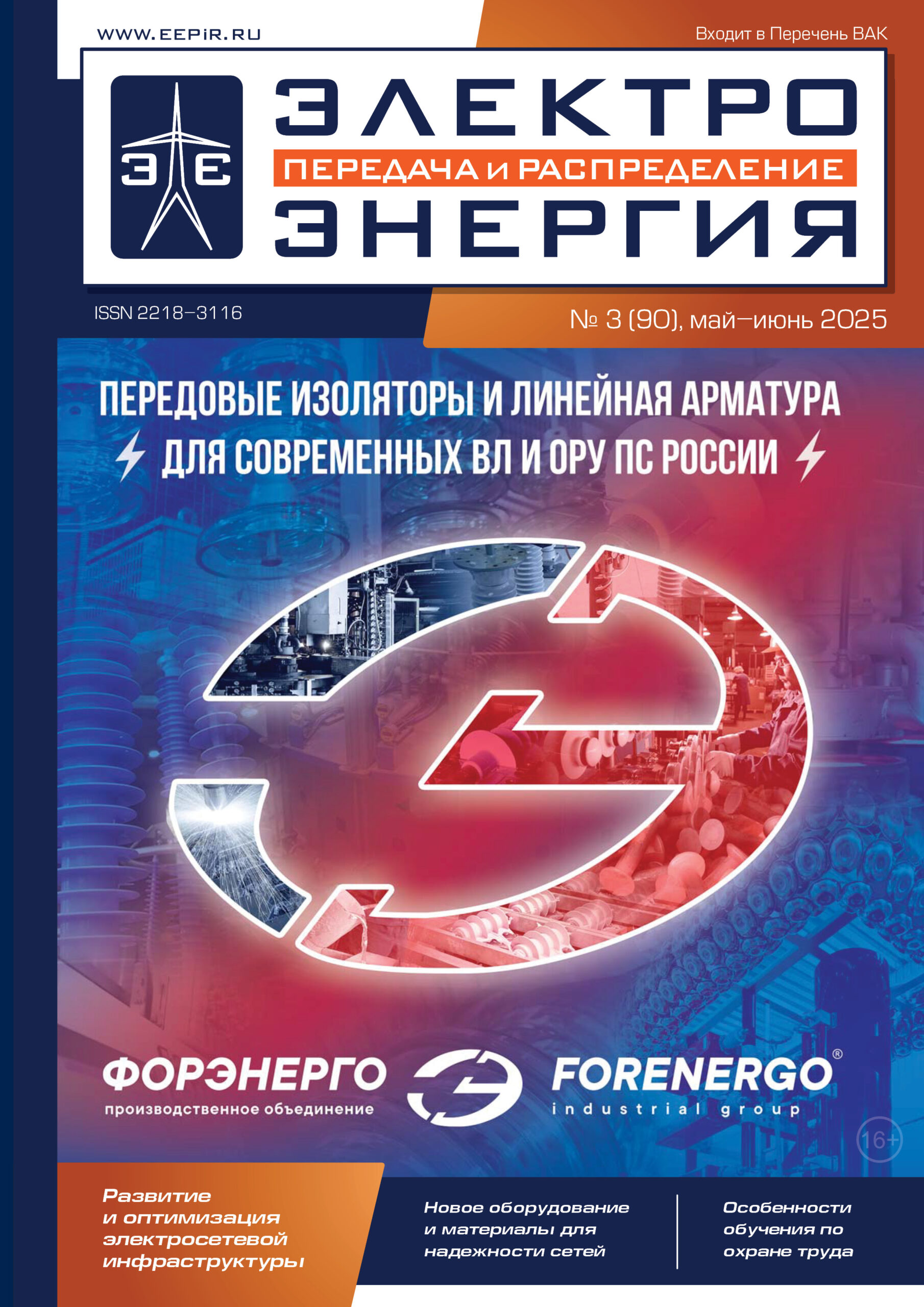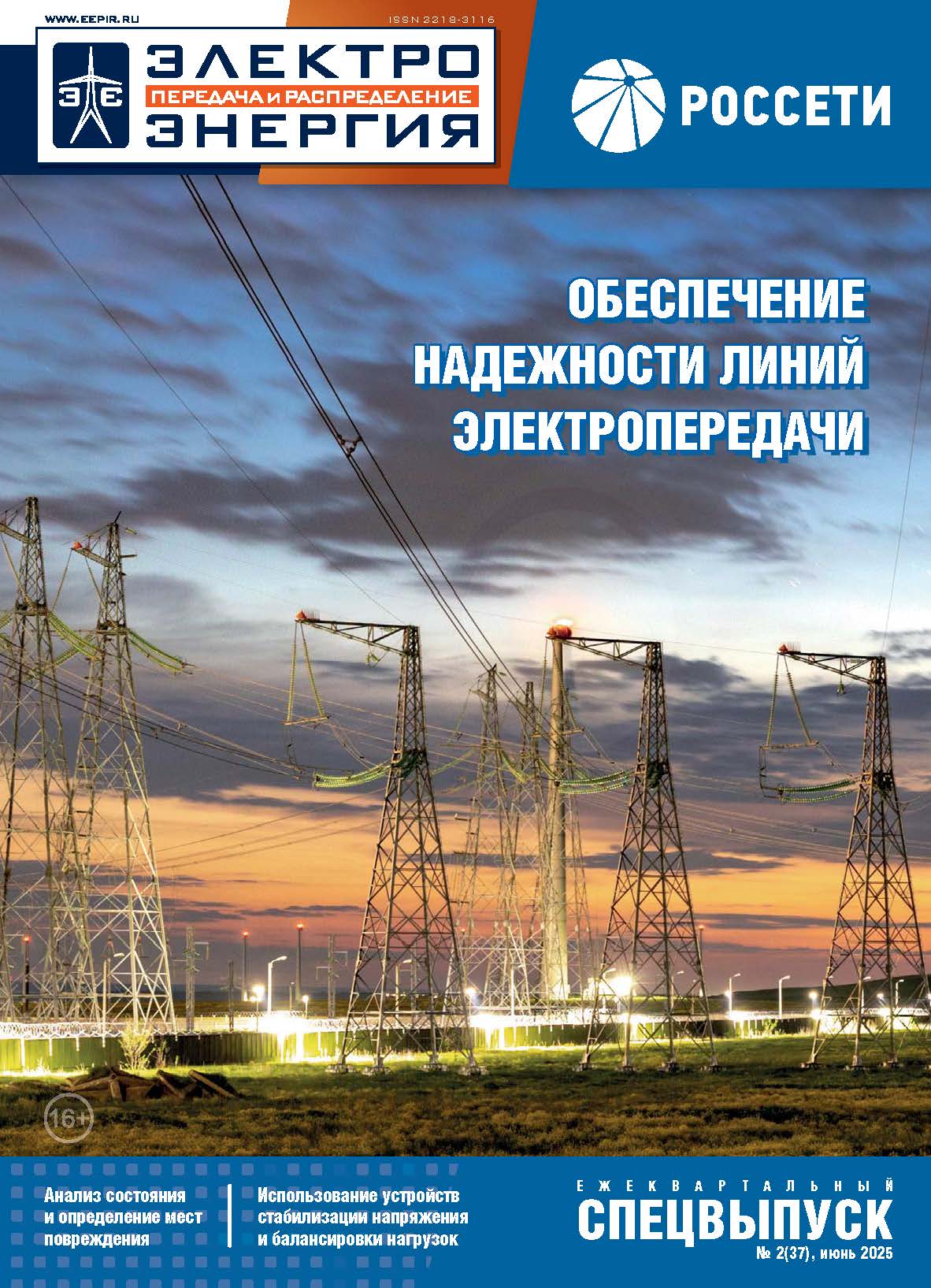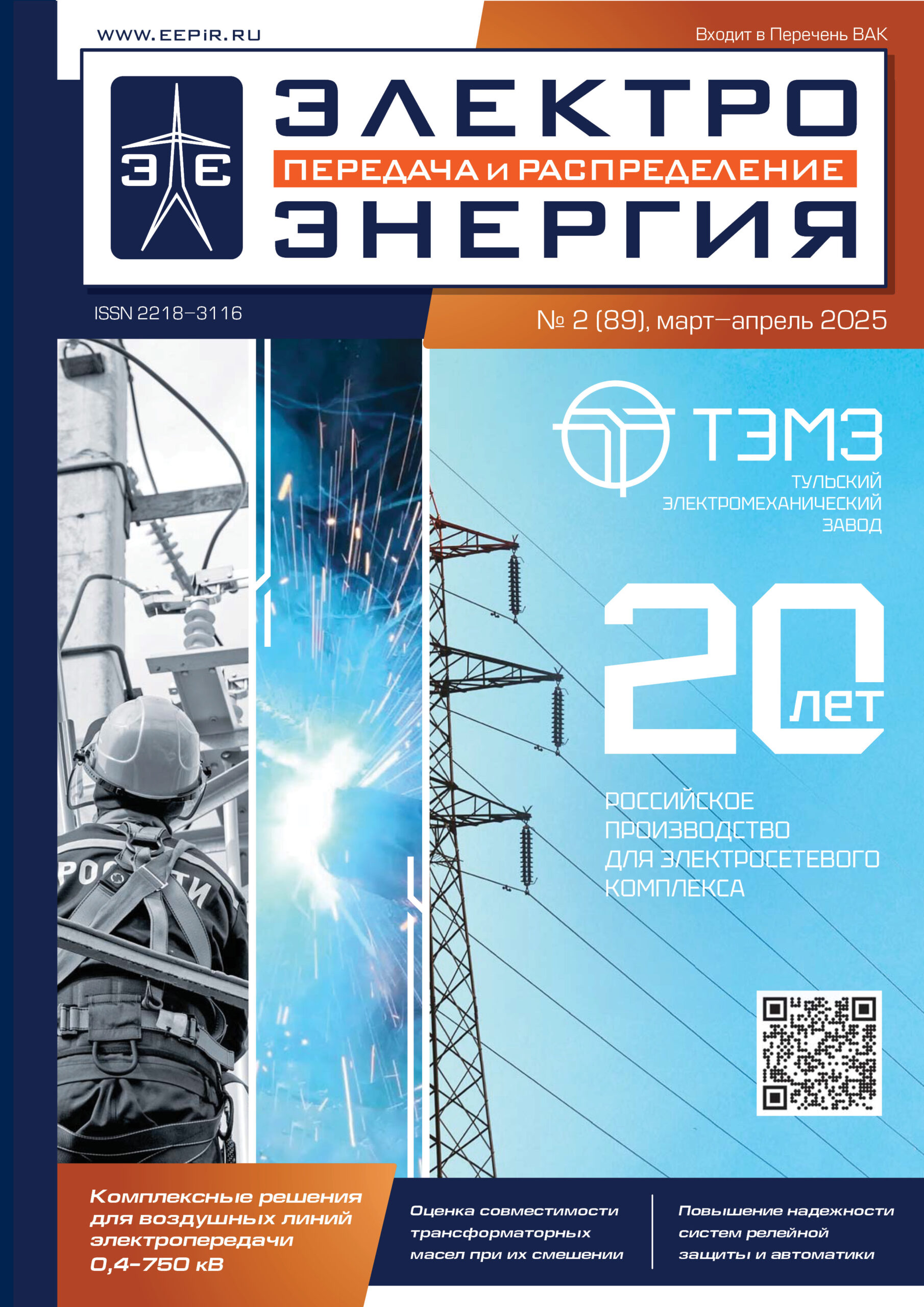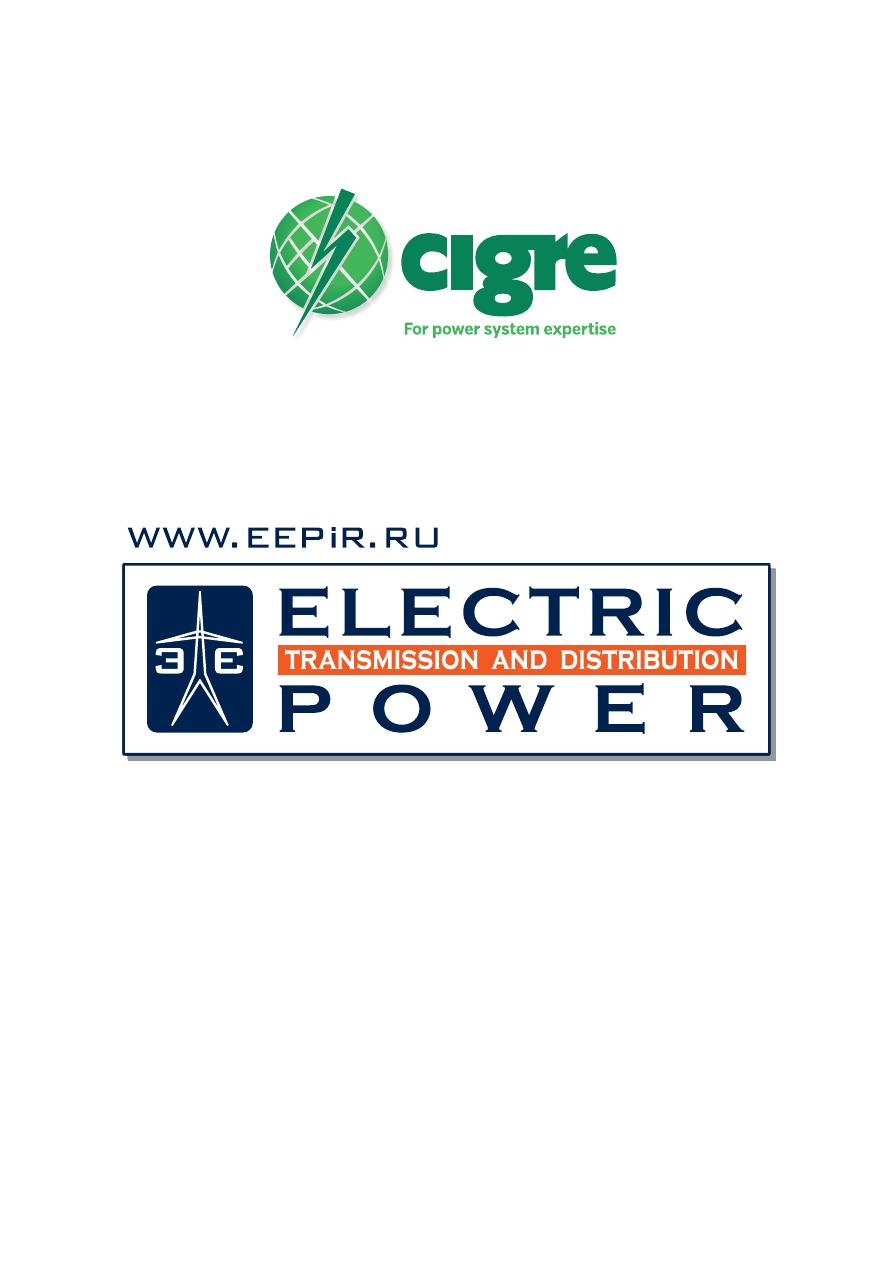
The MAIN JOURNAL for POWER GRID SPECIALISTS in RUSSIA
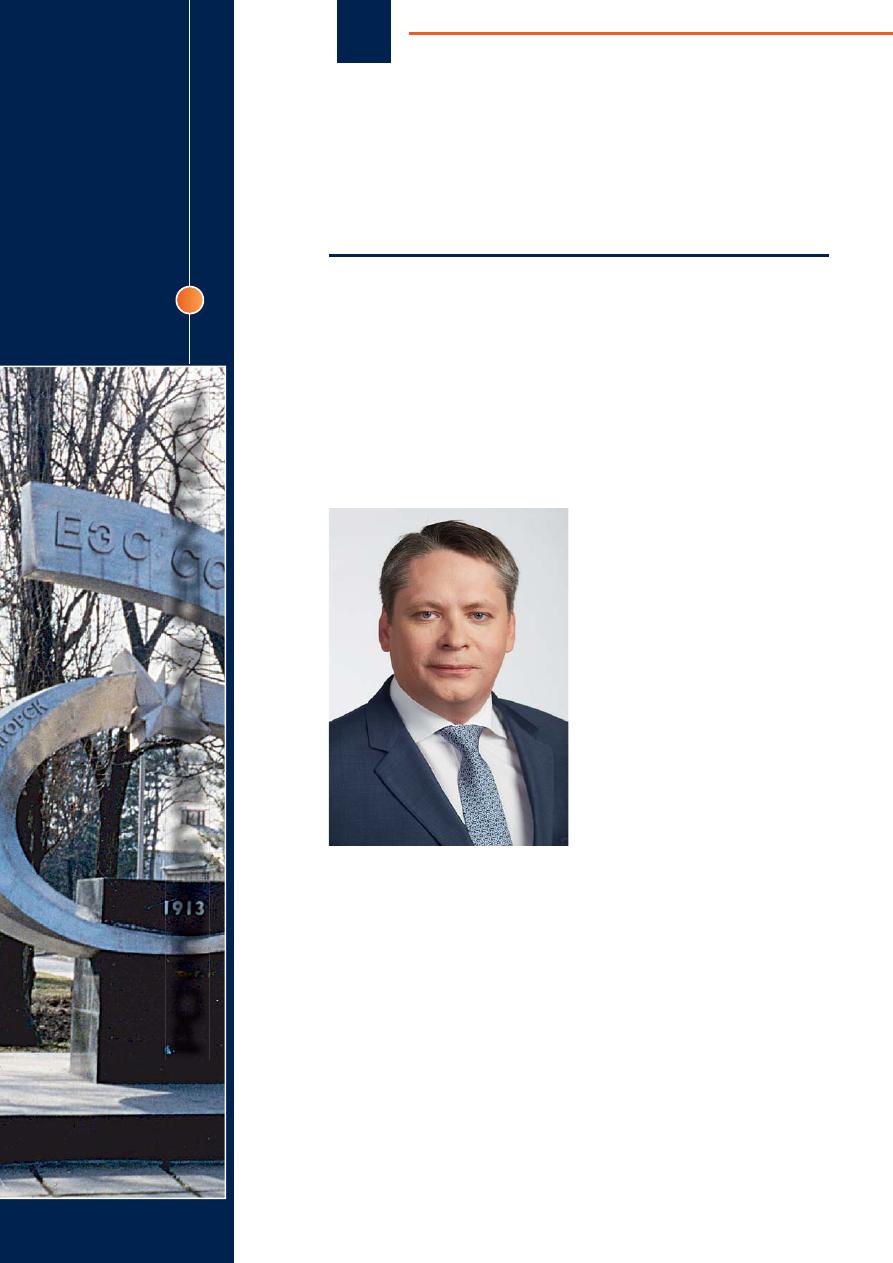
14
Among the global power organizations comprising power
engineers pursuant to their interests and directions
of activities GO15 Association can be distinguished.
GO15 includes the world’s largest power system operators.
Unlike many other professional unions GO15 is a sort of
elite club as to enter it the system operator must control
the power system which total load exceeds 50 GW. Such
large power systems are few in the world and their amount
remains unchanged for many years.
The Russian System Operator plays an important role at
GO15 not only due to the dimensions of the power system
but also thanks to the
efforts of its specialists.
This year the of
fi
cial
representative of the
company at GO15 Governing
Board and Steering Board
member, "System Operator
of the United Power System"
JSC Vice Chairman of the
Management Board Fedor
Opadchiy was elected
GO15 Vice President.
In his interview Fedor
OPADCHIY spoke about
the peculiarities of the
Russian Power System
and its dispatching control,
history and future as well as
on the major challenges
it faces.
Russian Power System
Operator: Advantages
and Current Сhallenges
– What are the peculiarities of
the power system controlled by
the Russian system operator?
– Russia has the widest terri-
tory in the world, so its power sys-
tem can be characterized as one
of a high geographic extent. It con-
sists of seven interconnected power
systems, each of them, in its turn,
including a signi
fi
cant number of re-
gional power systems. Interconnect-
ed power systems comprise large
centers of electric power generation
and consumption and are connect-
ed with 330, 500, 750 kV main trans-
mission networks. 750 kV network
is concentrated in the central part
of the country. It primarily provides
power delivery of the nuclear and
the largest thermal power stations.
The rest of the main transmission
network infrastructure operates at
220-330 kV and 500 kV. 220 kV and
110 kV networks operate in the re-
gions delivering power to the largest
energy hubs. The existing topo logy
of the backbone network was basi-
cally formed in the Soviet times. An
important role in the process of op-
eration of such an expanded power
system is played by power
fl
ows in
the main network as well as by sys-
tem sustainability maintenance.
Historical peak of consump-
tion recorded in our power system
amounted to 157.4 GW, annual
p
o
w
e
r
s
y
s
t
e
m
s
c
o
n
t
r
o
l
power syst
ems control
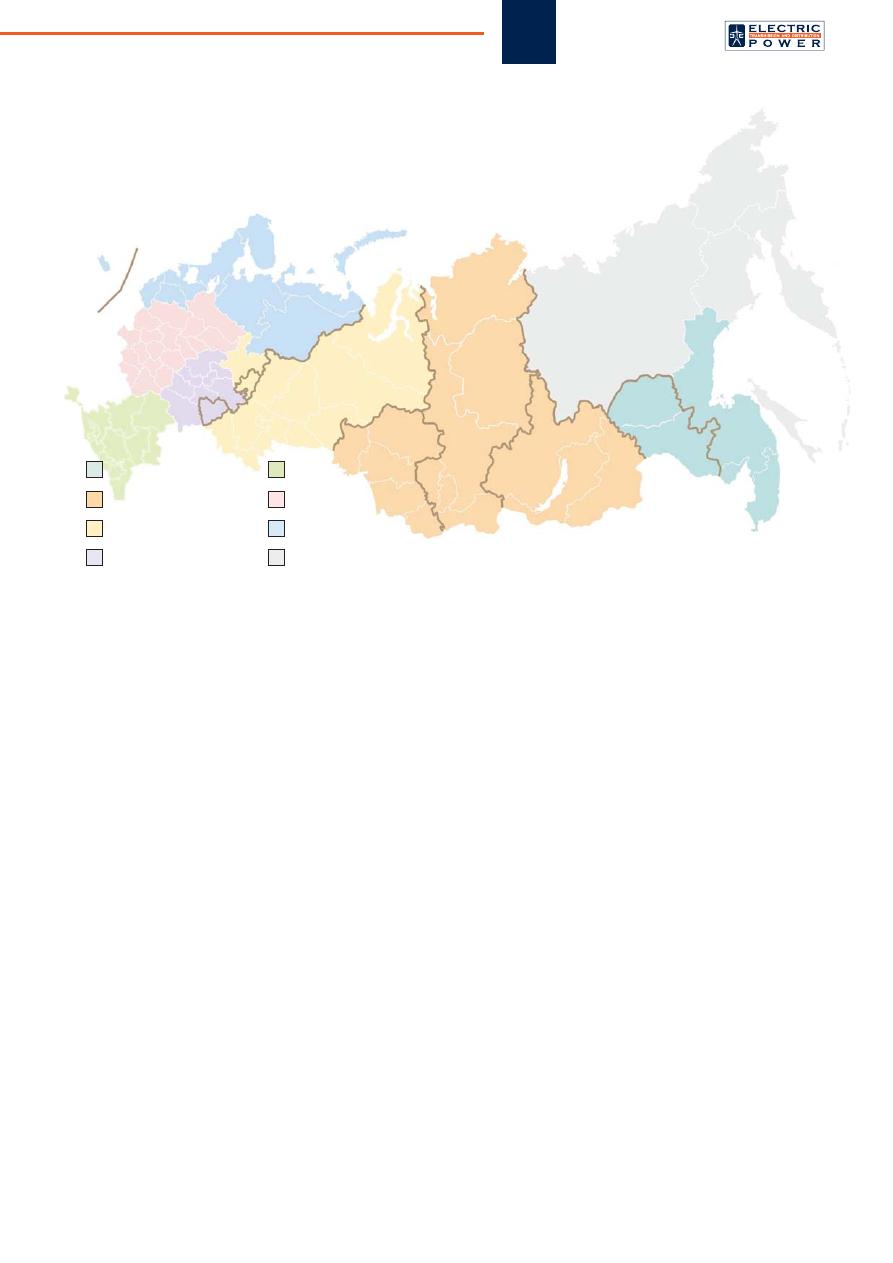
15
power consumption in 2017 slightly
exceeded 1,000 TW/h, and the in-
stalled capacity as of 2017 reached
almost 240 GW.
Most power stations with capac-
ity exceeding 25 MW and network
facilities of 220-750 kV operating
in the United Power System (UPS)
of Russia serve as the objects of
dispatch for the System Operator.
110 kV network facilities are man-
aged by the System Operator only
in case they have a systemic effect
on regional electric power operation
modes. Lower voltage type is rep-
resented by distribution networks
operated mostly and locally by net-
work companies. The principal part
of the distribution network complex
enters into PJSC ROS SETI, and
alongside this there exist more than
two thousand independent network
companies.
The UPS of Russia is a part of
a large IPS/UPS Interconnection
ope rating synchronously and in-
cluding power systems of 12 coun-
tries. The UPS of Russia is the larg-
est part of the Interconnection. It
shares about 70% of the total elec-
tricity consumption of the synchro-
nous zone. The size, geographic
location of the UPS of Russia and
network topo logy place Russia un-
der the duty of frequency regulation
in the Interconnection. The Russian
system operator pays fairly much
attention to the synchronous op-
eration modes coordination both di-
rectly during modes operation and
during development and promotion
of normative documents and mar-
ket regulations.
The UPS of Russia was formed
by consecutive consolidation of re-
gional power systems, so the cur-
rent structure of dispatch control re-
fl
ects such composition of the power
sector. There are three levels of the
dispatch control structure: Central
dispatching of
fi
ce, 7 interregional
dispatching of
fi
ces and 49 regional
dispatching of
fi
ces. Such hierarchy
is, in many ways, motivated by vi-
ability reasons of such a large and
extended power system. Sharing
responsibilities among the dispatch-
ing of
fi
ces of the System Operator
allows to provide control in compli-
cated and emergency situations,
as well as to deal more thoroughly
with the issues of regional power
systems development planning be-
ing highly important for the UPS of
Russia which historically developed
in the conditions of shortage of re-
sources and has a signi
fi
cant num-
ber of bottlenecks.
– How do the power system
peculiarities affect its electric
mode operation?
– The Russian power system has
good natural capabilities for optimi-
zation of modes of generation load,
as well as for sustaining reliability.
First, wide capabilities of optimal
usage of the existing generating ca-
pacities naturally originate from the
high geographic extent of the power
system due to location of the UPS
of Russia synchronous zone within
seven time zones. The load peak
moves within the power system from
the East to the West together with
the sun allowing for a more effective
usage of the existing power stations.
Due to the coincidence of the load
peak, when the total peak of the
power system is signi
fi
cantly lower
than the total of local load peaks in
its parts, the requirements for the
power system maximum capac-
ity reserves decrease and a tighter
time schedules of loading of power
stations is achieved with a direct
impact on the power generation ef-
fectiveness.
To fully use the effect, the Sys-
tem Operator implements proce-
dures of consecutive planning of
the system operation modes, which
include hourly complete optimiza-
United Power System (UPS) of Russia comprises
■
7 Interconnected Power Systems (IPS)
■
70 Regional Power Systems
9 time zones
UTC +2
MSK -1
UTC +3
MSK
UTC +5
MSK +2
UTC +6
MSK +3
UTC +7
MSK +4
UTC +8
MSK +5
UTC +9
MSK +6
UTC +10
MSK +7
- IPS of East
- IPS of Siberia
- IPS of Urals
- IPS of Middle Volga
- IPS of South
- IPS of Center
- IPS of North-West
- Isolated
UTC +4
MSK +1
UPS of Russia service area
47th CIGRE Session
Special issue, August 2018
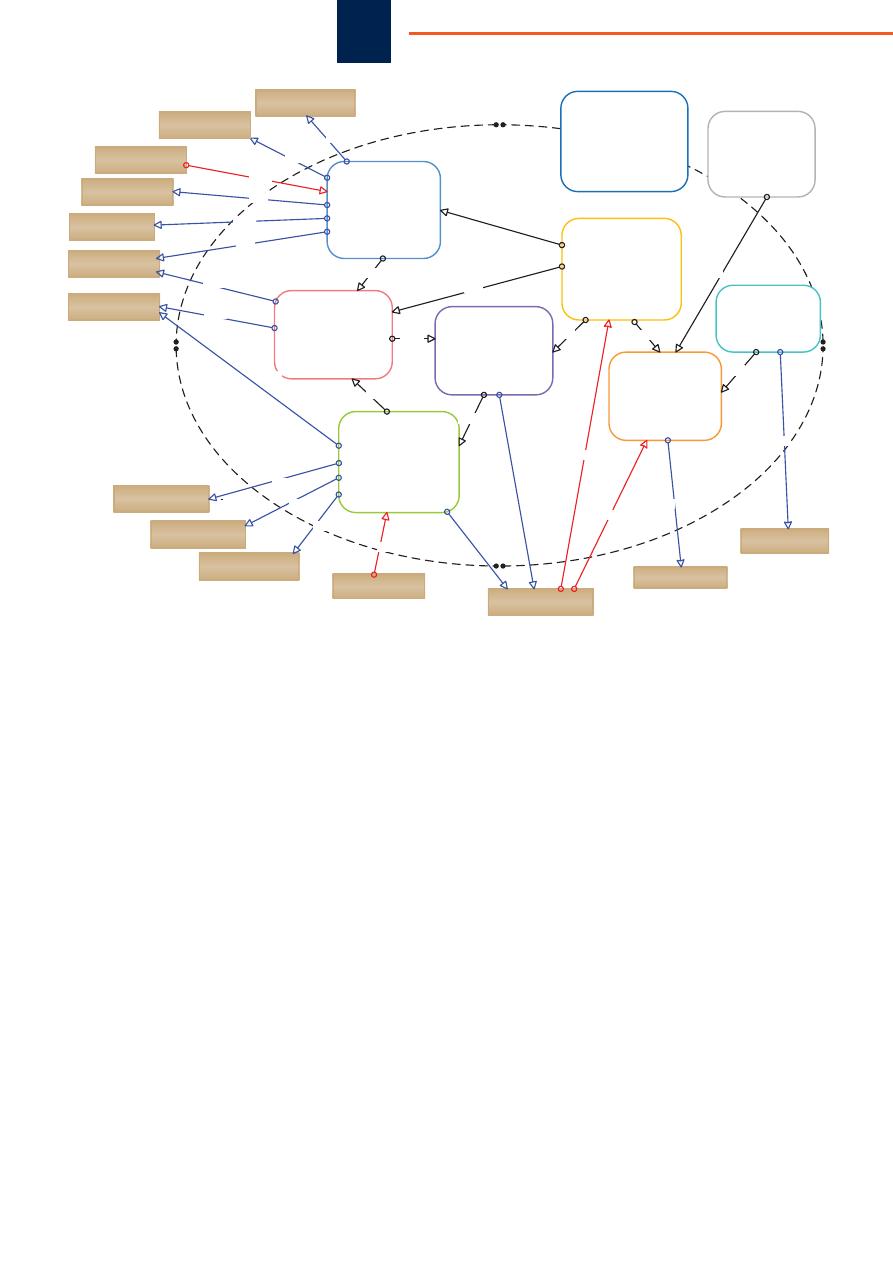
16
tion of loading modes for all power
stations operating at the wholesale
electricity market, and there are
about 400 of them. This planning
system ensures the highest system
effectiveness of fuel consumption by
using the most effective generating
equipment among that available at
the moment considering the actual
costs for power transmission. Due to
the great geographical extent of the
power system, the climate impact
differs much in different regions:
temperature can be higher than the
forecast in some regions, and lower
in others, and thus the task of re-
balancing of the system operation
to a mode close to the real time be-
comes more urgent.
Secondly, we consider thermal
generation, namely gas, as the main
method of electric power generation
because Russia possesses great-
est reserves of the world’s gas re-
sources. In Russia it is a relatively
cheap fuel type and it is also much
more ecology-friendly as compared
to coal the reserves of which are
signi
fi
cant as well. Thermal gen-
eration share in the total genera-
tion capacity of the UPS of Russia
is over 68%.
An important role is played by
hydrogeneration responsible for
over 20% of the total capacity of the
country’s power system. Both ther-
mal and hydro generation are highly
fl
exible resources that give serious
advantage for electric power mode
operation. Low-
fl
exible
nuclear
generation covers 11% of the total
generation capacity of the UPS of
Russia and is concentrated in the
western part of the UPS of Russia
up to the Urals.
An important feature of the UPS
of Russia is a large share of thermal
power stations with combined gener-
ation of electricity and thermal pow-
er, which is explained by the climate
factors speci
fi
c for Russia. Most of
our cities and towns use systems of
centralized heat and water supply
due to the fact that the most effec-
tive method of fossil fuel combustion
is combined cycle operation with the
theoretically possible ef
fi
ciency ap-
proaching 100%. Thus, simultane-
ous introduction of heat supply and
electric power generation allows for
signi
fi
cant reduction of fuel costs.
However, this imposes additional
limitations on load maneuvers at
such stations (primarily, on unload-
ing below the value speci
fi
ed), be-
cause heat generation modes are
of top priority in accordance with the
federal laws. To some extent, the
volumes of electric power genera-
tion in the cogeneration mode are
considered by us as an analogue to
the in
fl
uence on the RES balance
considering the dif
fi
culties of oper-
ating generating facilities based on
RES due to instability of the latter.
This cannot be a complete ana-
logue, though, as the cogeneration
modes are much more predictable
than RES, and there are alternative
methods of heat generation; still in
general, generation in the cogenera-
tion modes is considered by us to
be one of the main "consumers" of
a power system
fl
exibility in winter
time. And it undoubtedly has a sig-
ni
fi
cant effect on all dispatch control
procedures.
Third, some market instruments
are used to support adequacy and
stability. Primarily, it is the capac-
ity market that stimulates generat-
ing companies to maintain the pow-
er objects in a proper operational
state. Ancillary services market was
launched several years ago to solve
the issues of formation of neces-
IPS of Urals
Generation total = 260659,9
TPP = 217526,1
HPP = 6515,8
NPP = 10201,9
Wind = 0,9
Solar = 127,9
Own-use generation = 26287,2
Consumption = 261199,7
Net import = 539,8
ESTONIA
IPS of Center
Generation total = 237546,5
TPP = 121824,2
HPP = 4372,4
NPP = 100363,2
Own-use generation = 10986,7
Consumption = 238558,2
Net import = 1011,8
Text
kjkjkjk
IPS of North-West
Generation total = 108354,7
TPP = 48183,2
HPP = 14164,8
NPP = 36904,3
Wind = 0,8
Own-use generation = 9101,7
Consumption = 93899,4
Net import = -14455,4
IPS of Siberia
Generation total = 202657,8
TPP = 98693,1
HPP = 93943,2
Solar = 30,1
Own-use generation = 9991,4
Consumption = 205876,2
Net import = 3218,4
IPS of Middle Volga
Generation total = 107782,4
TPP = 47166,8
HPP = 25859,3
NPP = 31995,3
Own-use generation = 2760,6
Consumption = 108015,5
Net import = 233,1
IPS of South
Generation total = 100006,5
TPP = 53366,2
HPP = 21774,7
NPP = 23177,7
Wind = 128,3
Solar = 404,6
Own-use generation = 1154,9
Consumption = 99093,5
Net import = -912,9
LATVIA
LITHUANIA
BELARUS
UKRAINE
AZERBAIJAN
KAZAKHSTAN
2679,8
1983,3
2687,5
78,3
53,9
439,7
MONGOLIA
5819,4
GEORGI A
IPS of East
Generation total = 36854,2
TPP = 24581,9
HPP = 12272,3
Consumption = 33237,3
Net import = -3616,9
CHINA
3319,2
FINLAND
SOUTH OSSETIA
ABKHASIA
152,4
218,8
3756,5
297,7
460,6
5987,3
917,4
1747,4
3946,3
NORWAY
(cross-border trade)
103,7
UPS of Russia
Generation total = 1053861,9
TPP = 611341,5
HPP = 178901,6
NPP = 202642,4
Wind = 131
Solar = 563
Own-use generation = 60282,5
Consumption = 1039879,9
Net import = -13982,1
2754,2
347,4
Western Area of
Sakha (Yakutia)
Generation total = 3003,6
TPP = 2,4
HPP = 3001,1
Consumption = 2950,1
Net import = -53,4
53,4
78,7
318,5
28,6
275,5
1291,9
16,8
1794,3
1258,6
UPS of Russia cross-border interconnections (bln kWh)
POWER SYSTEMS
CONTROL

17
sary reserves of rated primary and
automated secondary frequency
control. It adds to the capacity mar-
ket mecha nisms creating resources
needed to support reliability and op-
erational quality of the power system.
Economic mechanisms are also built
in the structures of the day-ahead
and balancing markets and aimed at
more accurate compliance of power
stations with time schedules and in-
structions of a dispatch control engi-
neer.
– Nowadays, a number of the
world’s largest power systems
undergo processes of unbun-
dling the functions of power sys-
tem dispatching from the network
operators structure and a transfer
to the independent system ope-
rator model. Each country has
its own reasons to do this. What
were the reasons for Russia to
choose the independent system
operator model?
– The independent status of the
System Operator in Russia came
as a natural result of the in
fl
uence of
a series of economic conditions and
technical particularities of the power
system. In Russia the concept of the
independent dispatch control was
developed at the beginning of 2000s
during preparation of the sectoral
reform, in the course of which the
power complex was unbundled as
per activity types: generation, trans-
mission, supply, scienti
fi
c research
and engineering and etc., and fur-
ther competitive types of business
were privatized. Under such circum-
stances, in order to ensure techno-
logical integrity of operation of such
a large and extended power system
as well as to provide possibilities for
systemic optimization of its opera-
tion, which I described before, it was
required to structurally incorporate
within a single company the func-
tions of dispatch control of the UPS
of Russia at large as well as of the in-
terconnected power systems and the
regional power systems which were
formerly under control of vertically in-
tegrated regional holding companies.
Besides, in the circumstances of
unbundling of the electric power in-
dustry by the activity types and com-
petitive businesses privatization,
nearly every technological action of
the System Operator in
fl
uence eco-
nomic results of certain market play-
ers' activities; and the scale and the
scope of such in
fl
uence increases
dramatically upon rise of the level
of centralization of ope rational dis-
patch control functions. The simplest
example – coordination of repair
schedules of the electric network and
generating equipment. In our power
system with a signi
fi
cant number of
bottlenecks, it is often impossible to
conduct all necessary works with the
equipment owned by different own-
ers, so their mutual coordination is
required. It becomes critical during
ful
fi
llment of such function to avoid
the con
fl
ict of interests and af
fi
liation
of the System Operator with any of
the market members.
Another example. Modern pow-
er markets aim at optimizing the
cost of power for consumers. With
that it often happens that loading
a cheaper power station, located
remotely from the consumer, proves
to be more effective than loading of
an expensive one which is nearby,
despite the fact that this leads to in-
creased network losses. This is an
advantage for the consumer who
pays for the whole chain – genera-
tion plus transmission; but for a net-
work company this means direct
rise of costs related to compensa-
tion of additional losses. In case
the System Operator is merged
with a network company a new
con
fl
ict of interests arises. By the
way, we conducted special simula-
tion together with the Trade System
Administrator (Russian Power Ex-
change) to learn what would hap-
pen if the wholesale market was
restructured for the purpose of net-
work losses optimization, and the
results we got were catastrophic
for the consumer meaning the price
increase by 2 or 3 times provided
that the current principles of price
formation were preserved at the
wholesale market. This means that
the independence of the system op-
erator is an important condition for
the current organizational model of
market relations within the Russian
electric power sector to exist.
The System Operator is deeply
involved in the processes of tech-
nological connection of new con-
sumers and power stations to the
network. According to the laws appli-
cable in Russia, all technical speci-
fi
cations issued by network organi-
zations for connection of generation
and consumers with a capacity of
more than 5 MW are mandatorily to
be approved by the System Opera-
tor. In this process we act as an in-
dependent technical expert and this
helps us to balance the problems
of maintaining the power system
reliability and economic results of
speci
fi
c technical solutions of differ-
ent sectoral subjects. The indepen-
dent status of the System Operator
makes it possible to avoid the con-
fl
ict of interests within this process
as well as to ensure transparency of
the suggested solutions for all par-
ticipants of the process.
There are many other examples
of potential con
fl
icts of interests be-
tween the functions and the owner-
ship structure of the System Opera-
tor. Just because of this, the variant
of a completely independent system
operator with 100% control over it
being retained by the government
was chosen while reforming of Rus-
sian electric power sector.
– What are the main challeng-
es that your company is facing
now? How do you manage them?
What kind of problems does this
help to reveal?
– Not all the forecasts consid-
ered at reforming of Russian elec-
tric power sector worked well. At
present we have faced a signi
fi
cant
slowdown in electric power con-
sumption growth (demand stag-
nation); it made less than 1% in
2017 whereas the forecast value of
annual increase of electric power
consumption was stated to be about
4-5%. As a result, today, instead of
shortage, we have about 15% of
generating capacity in excess of the
needed volume with due account for
reserves. Such change of the ba-
lance resulted in signi
fi
cant growth
of competition among suppliers, and
consequently, noticeable decrease
of the relative cost of electric power
on the free market. Rates of electric
power prices growth on the whole-
sale market lag behind those of the
prices for the basic type of fuel used,
i.e. gas. All these reduce investment
attractiveness of the sector and sets
forward a number of fundamentally
new tasks.
The core of the generating
fl
eet in
the UPS of Russia is formed by the
power stations built in 1970s. Taking
into account completion of the CSA
47th CIGRE Session
Special issue, August 2018
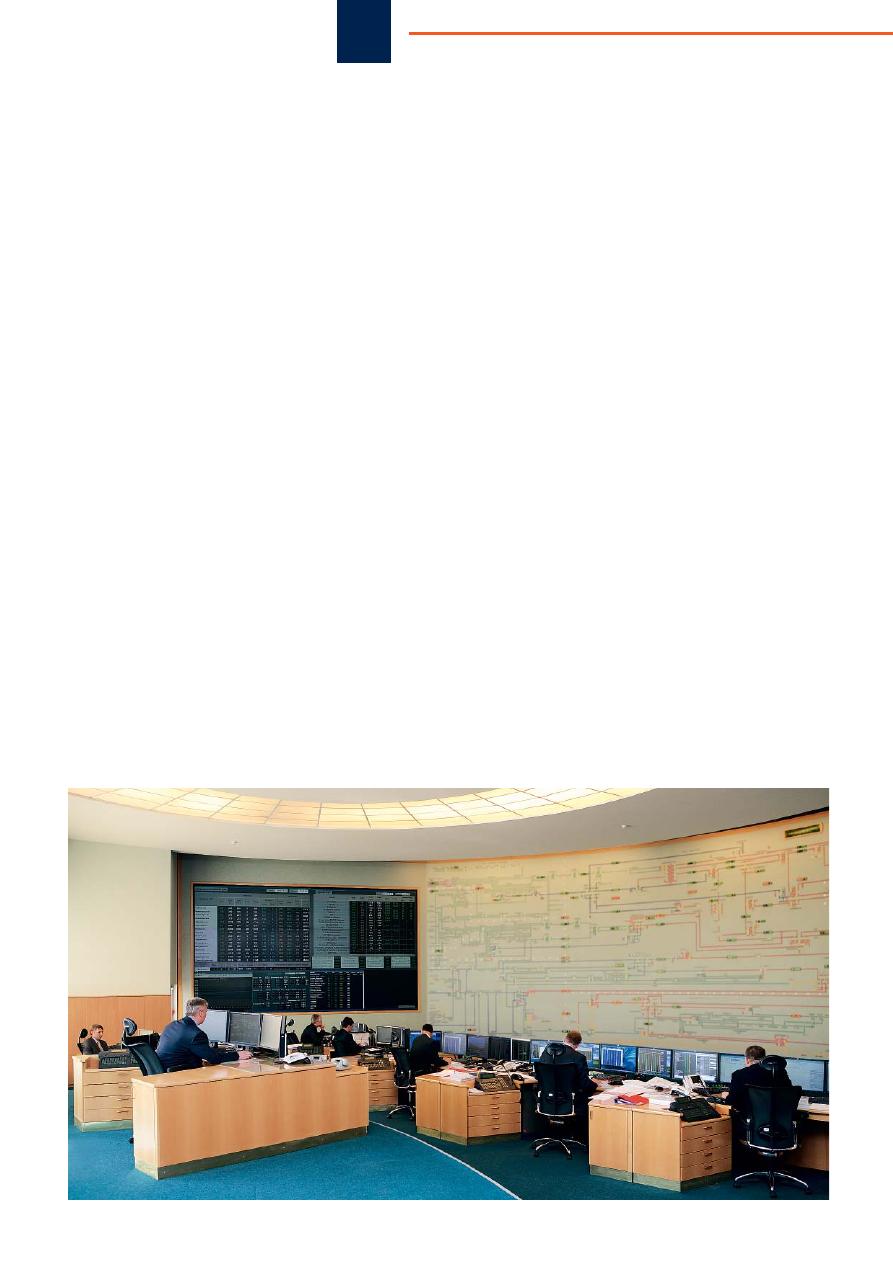
18
program according to which new
equipment was put into operation,
now the current task is to develop
and implement mechanisms facilitat-
ing modernization and prolongation
of the life-cycle of the existing ge-
nerating capacities. As of today, over
40 GW of thermal power stations
require replacement of turbines that
have exhausted their
fl
eet life. Other
large-scale equipment of power sta-
tions also needs to be replaced.
In order to implement such ma-
jor plans special mechanisms re-
quire to be established in the sector
to ensure massive implementation
of such type of projects. Neverthe-
less, simultaneous decommission-
ing of equipment for reconstruction
at different power stations must not
cause problems of temporary ca-
pacity shortages in the power sys-
tem, as a whole and in some of its
parts, in particular. Reconstruction
is reasonable to be applied,
fi
rst of
all, to the most relevant equipment,
this means that regular modes of
ope ration will also be changed in the
course of the program implementa-
tion. In order to correctly and prop-
erly consider all technical aspects of
the massive modernization, currently
the System Operator takes an active
part in the process of development
of applicable rules and procedures.
Jointly with the wholesale electricity
market commercial operator we held
test tender for the purpose of mo-
der nization projects selection, and
we got about 400 bids from various
power stations. This makes it pos-
sible for us to evaluate approximate
parameters of the moder
nization
program and the projects structures
even today.
The second acute problem is
related to the previous one and
consists in setting up a process of
decommissioning of outdated and
non-effective capacities that cannot
be reasonably upgraded due to tech-
nological or economical factors. This
issue is quite complicated as a sig-
ni
fi
cant part of the operating thermal
generation ensures district heating
of cities, towns and settlements,
thus, even power stations that are
unpro
fi
table cannot be closed with-
out any substitution, this being very
often related to serious investments.
The similar problems arise if certain
generating units affect stability of
local electric modes due to the lo-
cations of the units in the network;
substitutional actions are required at
decommissioning of such units, and
sometimes even commissioning of
new generating capacities may be
needed. Solving of such matters re-
quires a separate code of rules and
procedures to be set, this is what we
are actively engaged in today.
There are also other important
issues set forth by today’s world. It
is, for example, development of the
common electric market with Ka-
zakhstan, Belarus, Armenia and Kir-
gizia. This project is very interesting
in all terms – technological, political,
legal and organizational. I think, it
will be quite dif
fi
cult to synchronize
different models of power sector
organization which vary so much.
But still we believe that we will be
a success in everything; this as-
sumption is supported by the posi-
tive experience that we have had in
synchronizing Russian market and
Nord Pool (nowadays it is part of the
European Internal Energy Market)
during the power exchanges with
Finland.
Speaking about internal chal-
lenges, three main directions can be
determined. First of all, we are now
executing a large project of imple-
mentation of a new-age SCADA in
all of our 57 system control centers.
The life cycle of the current solu-
tion is being
fi
nished, and we are in
the process of designing of the new
SCADA-system, as well as of phased
implementation of its key blocks,
such as the hierarchical manager
of network models, calculated sub-
systems etc. The task is even more
complicated due to the fact that,
given the existing three-level struc-
ture of operating dispatch control,
all our key IT-systems require a dis-
tributed structure, on the one hand,
and, on the other hand, it is critical
for us to ensure not only data integri-
ty and consistency in all dispatching
SO UPS Main Control Center
POWER SYSTEMS
CONTROL

19
of
fi
ces at the same time, but also
the possibility of autonomous opera-
tion of each of them in emergency
situations. This task is very compli-
cated and interesting with regard to
IT. We consider very important and
useful our GO15 colleagues’ experi-
ence and results of GO15 Commit-
tee 4 "Grid Intelligence" research as
well as such documents as White
Paper "EMS for the 21st Century
System Requirements" by CIGRE in
2011 for the designing process and
practical work. All these enable us
to consider most advanced global
achievements during new SCADA
system development.
Second, we actively develop
both new automation tools based on
WAM (Wide Area Measurements)
technologies and emergency auto-
matics. The research conducted
within GO15 Committee 4 "Grid In-
telligence" demonstrated that, as
of 2015, the UPS of Russia ranked
third in terms of the quantity of the
mounted phasor measurement
units (PMU). Within the framework
of our technical policy, we imple-
ment a complex program of devel-
opment of automation technologies
based on phasor measurements.
And third, we implement pro-
jects focused on operating dispatch
control organizational framework
improvement. We integrate opera-
tional zones of regional dispatching
of
fi
ces and pass control of a small-
er regional power system where big
generating facilities or consumer
centers to a neighboring larger
control center are not exist. Such
projects are implemented not only
to optimize expenses, though this is
important, but to improve the power
system control by development of
new technologies and strengthen-
ing of the personnel in the remain-
ing system control centers. Such
projects are quite complicated in
terms of technology, as they re-
quire restructuring of the existing
communication network and the
IT-infrastructure, as well as training
of staff. In such a way, we consoli-
dated 16 dispatching of
fi
ces over
the last years.
– For the last years the tradi-
tional state of the power sector
was being changed under the
in
fl
uence of new technologies:
distribution of RES, distributed
generation, power electronics,
Smart Grid. How does the power
system dispatch control mecha-
nism react to these changes in
your country?
– In Russia, a governmentally
approved development program of
wind and sun generation has been
established for several years al-
ready. Project selection and earning
income by the RES owners are in
accordance with the principles well-
proven on the capacity market. De-
velopment of such generation is, just
like in many other countries, subsi-
dized on the account of other mar-
ket participants. Tenders for building
a certain volume of the RES are held
annually. As of today, 234 MW of so-
lar generation have been commis-
sioned; last year the
fi
rst large wind
farm with the capacity of 35 MW
was put into operation. Localization
of the corresponding equipment pro-
duction on the Russian territory is an
important requirement to these pro-
jects. All new projects that are annu-
ally submitted for tender contain re-
quirements for a deeper localization
of the equipment production facili-
ties. Considering insigni
fi
cant RES
volumes, their commissioning has
not yet had any effect on the prin-
ciples and the major procedures of
the Russian power system control.
Nevertheless, the System Operator
takes an active part in the process
of setting up a normative and tech-
nological basis for RES functioning
within the UPS of Russia, and also
Reliable and Sustainable Power Grids
is association of system operators responsible for
control of large power systems above 50 GW. Founded in 2004.
GO15 unites the efforts of the world’s largest system operators in
order to solve similar problems with the aim of common sustainable
development under the conditions of steady expansion of power sys-
tems and increasing dependence of social and economic growth on
security of power supply.
GO15 members are 19 power grid operators:
AEMO
(Australia)
Elia Group
(Belgium)
ONS
(Brazil)
National Grid
(UK)
CSG / CSPG
(China)
SGCC
(China)
Power Grid / PGCIL
(India)
REE
(Spain)
Terna
(Italy)
SO UPS, JSC
(Russia
)
CAISO
(USA)
MISO / Midcontinent ISO
(USA)
PJM Interconnection
(USA)
RTE
(France)
TEPCO
(Japan)
ESKOM
(South Africa)
KPX
(Republic of Korea)
CENACE
(Mexico)
GCCIA
(Cooperation Council for
the Arab States of the Gulf Power
Systems Interconnection Board)
GO15
SO UPS delegation at the GO15 Governing Board meeting in Moscow. September 2016
47th CIGRE Session
Special issue, August 2018

20
works on determination of technical
standards for interaction with such
power stations. Requirement to the
generating facilities’ staff, their ob-
servability at the dispatching of
fi
ces
etc. are speci
fi
ed. According to the
rules, right away such facilities are
obliged to ensure readiness for oper-
ative disconnection from the network
upon an operator's command. We
assume that it is necessary to follow
the route of extended requirements
to RES participation in the processes
of the power system control. For ex-
ample, in frequency control.
This, to the full extent, also con-
cerns distributed generation. Un-
der Russian conditions, these are
mostly small thermal power stations
using gas-fueled generating tech-
nology, or small gas turbines. Such
stations are constructed by the end
users to whom savings on the net-
work tariff are signi
fi
cant. They can
also be used by plants that have
got gas as a by-product that must
be disposed of in accordance with
ecological requirements after all.
In a number of cases application of
such solutions helps the consumer
to economize signi
fi
cantly, particu-
larly in cases when a new facility is
connected to a system. Today this
process develops dynamically, so
it is very important to determine
the uni
fi
ed rules that will not do any
harm to other players.
Development of consumers’ ge-
ne ration caused new challenges:
how should a consumer being an
owner of generating facility inter-
act with the power system; should
the "big" power system consider
this facility as a reserve, and if yes,
then what volume of generation;
what should be his economic rela-
tions with the UPS of Russia; and
others. One of the solutions set up
and promoted by us, as far as dis-
tributed generation is concerned, is
the concept of a self-balancing utility
company (SBUC). In its essence, it
is a micro power system – a mini-
VIC (vertically integrated company)
which combines all: consumption,
generation and transmission. The
basic idea lies in the limited connec-
tion of such "cell" to the "big" power
system
fi
xing relations with the "cell"
strictly within the scope of such con-
nection with full liberalization of in-
ternal relations between the entities.
To our mind, such model could be
suitable for economic clusters – in-
dustrial and business parks. At pres-
ent the model is considered as a pi-
lot model.
– Does your power system use
any economical Demand Response
technologies? What do you think
of their potential? If not used, do
you plan to introduce any?
– Yes, they are certainly used.
This mechanism was developed
and started working last year. Start-
ing from January 1, 2017, this new
mechanism has been included in the
day-ahead market procedures. We
use it to extend participation of our
consumers in the procedures en-
suring the market balance between
demand and supply, as well as to
increase competition. Today several
large industrial consumers, particu-
larly, aluminum plants, participate in
the programs of economical demand
response on the wholesale market.
At present Demand Response rules
are at the stage of development for
the retail market.
– "Power System of the Fu-
ture" term is becoming more and
more popular in the global power
fi
eld. What does this notion mean
for you?
– The notion of the "Power Sys-
tem of the Future" does not seem to
have only one meaning to me. Of
course, there is a constituent which
is common to all of us. It includes, for
example, the endeavor to increase
power system energy ef
fi
ciency and
get maximum possibilities not out of
extensive growth, but by implemen-
tation of innovative technologies.
Extensive development is be-
coming more and more expensive –
it is impossible already to extend
networks in many countries due to
the lack of land. This means that,
on the one hand, the share of dis-
tributed generation will grow, and on
the other hand, that it is necessary
to make the maximum use of the
possibilities offered by the existing
infrastructure. And this is then the
so-called "smartisation" –
fl
exible
transmission systems, power elec-
tronics, improvement of monitoring
and control systems. For example,
here, in Russia, we develop systems
for monitoring of reliability margins
of the transmission network with
potential implementation of WAM
technologies, based on the same
principles as the unique Russian
centralized automated emergency
control systems. The monitoring
systems enable to optimize usage
of available transmission capacity
of interconnections by harmonizing
interconnection working mode with
current operational mode of the
power system.
An important constituent of the
"power system of the future" no-
tion – application of Demand Re-
sponse technologies. This also
helps to improve the power system
output. For example, at present in
the UPS of Russia there are about
2 GW demanded less than 44 hours
a year. Just as any other genera-
tors, these facilities participate in the
capa city market and their capacity is
paid for all the year round. Instead,
it is possible to pay a relatively small
sum for the consumers to decrease
consumption within these 44 hours
a year. This is more effective from
the point of view of the power sys-
tem economy.
Voltage types will also grow, as
this helps to increase the networks
transmission capacity without creat-
ing new corridors for the intercon-
nections; generation will move clos-
er to the centers of consumption, or
vice versa, to the places concentrat-
ing primary resources, particularly
speaking of the RES; direct current
transmission lines and power elec-
tronic devices must develop.
I presume that in the "Power Sys-
tem of the Future" we will also
fi
nd
a solution to the issues of electric
power storage, but it should not be
only by means of a universal break-
through innovation. Each coun-
try can solve the matter in its own
way, depending on the possibilities
and natural advantages that it has.
Somewhere there can be power stor-
age hubs made up of an enormous
number of small-capacity batteries.
Traditional pump-storage plants
will continue to be developed, and
somewhere new solutions will be set
up and introduced, such as gravity
power storages. In any case, the
power system will obtain new quali-
tative features only when it has got
many power storages and all of them
are integrated by sole control sys-
tems.
Interview was conducted
by Natalya Saltykova
POWER SYSTEMS
CONTROL
Оригинал статьи: Russian Power System Operator: Advantages and Current Сhallenges
Among the global power organizations comprising power engineers pursuant to their interests and directions of activities GO15 Association can be distinguished. GO15 includes the world’s largest power system operators. Unlike many other professional unions GO15 is a sort of elite club as to enter it the system operator must control the power system which total load exceeds 50 GW. Such large power systems are few in the world and their amount remains unchanged for many years. The Russian System Operator plays an important role at GO15 not only due to the dimensions of the power system but also thanks to the efforts of its specialists. This year the official representative of the company at GO15 Governing Board and Steering Board member, «System Operator of the United Power System» JSC Vice Chairman of the Management Board Fedor Opadchiy was elected GO15 Vice President. In his interview Fedor OPADCHIY spoke about the peculiarities of the Russian Power System and its dispatching control, history and future as well as on the major challenges it faces.






